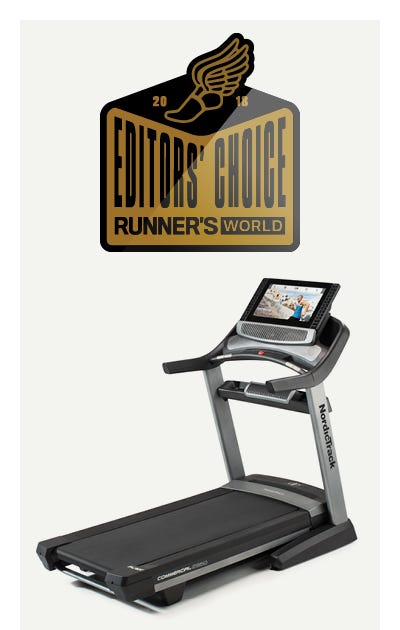Turn a tired routine into an exciting part of your training.
When we say treadmill, do you automatically think dreadmill? We get it. The scenery is monotonous, there’s no fresh air or sunshine, and if you slog through the same workout every time, the tedium is real. But here’s the thing: With the right plan, treadmills workouts can offer much-needed variety and even a burst of motivation—no matter what time of year, but particularly as we head into another winter season. F
Is the Treadmill a Good Workout?
Just ask Lisa Rainsberger, the 1985 Boston Marathon champ (and mom of current top collegiate miler Katie Rainsberger). Rainsberger swore by treadmill workouts to survive long Michigan winters growing up. “My old treadmill lasted 14 years, two marriages, and moves to four states!” she says with a laugh. She specifically credits it as an awesome tool for interval training, which science shows can boost metabolism, increase strength, and improve speed.
What’s more, treadmills allow you to literally see yourself progressing, says Jill Bishop Korn, a Washington, D.C.-based exercise physiologist. “The numbers are right there in front of you,” Korn says. “For people who like to measure, it’s a motivator.” There’s also the control factor: Treadmills allow you to train at a consistent pace (which can be hard to do outdoors), they don’t require navigating around potholes or stray branches, there’s less joint stress than with asphalt or concrete, and they’re far safer for those who want to zone out and run with music.
[Let Runcoach unleash your full potential with personalized training, expert coaching, and proven results.]
“Music is going to make or break that training run, so you want something that has a nice beat you can connect to,” says Hollis Tuttle, RRCA-certified running coach at Mile High Run Club. “Music at 160 to 180 beats per minute will help you maintain a nice smooth rhythm.”
How Many Minutes Should You Do on the Treadmill?
One of the biggest complaints, of course, is boredom. To keep it at bay, Rainsberger suggests skipping super-long runs (save those for the outdoors) in favor of shorter, programmed sessions two or three times a week. Our bodies adapt quickly to new routines, says Korn, so be sure to spend at least part of your workout challenging yourself with a new speed or incline setting.
You can also turn to your Netflix queue, says Rod Wilcox, a running coach and personal trainer at Harbor Square Athletic Club in Edmonds, Washington—so long as you’re running a steady-state workout and not a grueling interval session (when you can’t afford to split your attention between safety and The Great British Baking Show). Most TV episodes conveniently last 30 minutes to an hour, depending on what genre you’re watching, so it’s the perfect excuse to pull double-duty.
Plus, today’s tech updates make it easier than ever to stay motivated: Most gym and home models offer touchscreens, built-in fitness-tracking apps, dozens of workouts designed by running pros, and settings that allow you to mimic steep hills (think 15 percent inclines) and drastic downhills (up to 3 percent). Some even sync with activity apps, or allow you to access mapping programs that simulate real-road conditions (like the NordicTrack C 990).
Whether you need to spice up an old routine or start from scratch, these four creative and engaging treadmill workouts will help you switch up your indoor training.
Know Your Paces for Your Treadmill Workouts
Before you get started, dial in your pace. “Easy pace means you can hold a conversation,” says Wilcox. For a fast pace, you can say a word or two, but not a complete sentence. All-out pace is a sprint: You can’t talk, and can only sustain your speed for 30 seconds to a minute. Recovery pace is between easy and fast: You can talk, but don’t really want to.
[Smash your goals with a Runner’s World Training Plan, designed for any speed and any distance.]

The Ultimate Treadmill Workout to Increase Speed
This workout was created by Lisa Rainsberger, founder of Training Goals, Colorado Springs. It’s a classic “3-2-1” speed session for a total of 34 minutes. Intermediate runners: Increase the warmup and cooldown to 10 minutes each for a 44-minute run. Advanced runners: Increase the warmup and cooldown, and repeat the 3-2-1 fast/recovery block a third time for a 56-minute run.











Recent Comments